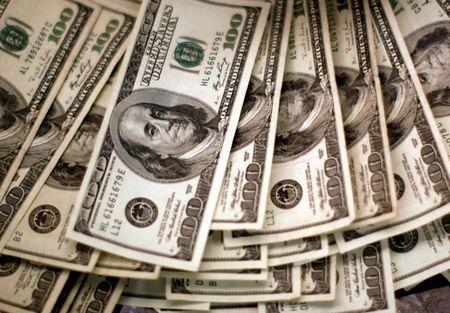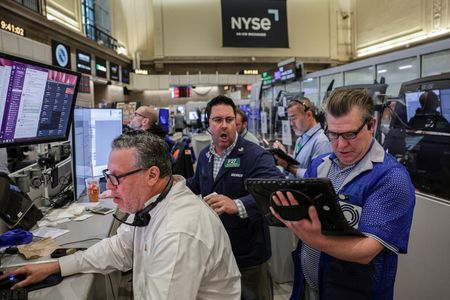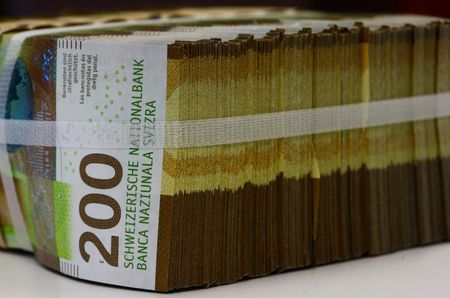By Rae Wee
SINGAPORE (Reuters) -The dollar firmed slightly on Monday as investors braced for the release of a slew of U.S. economic data following the end of the government’s shutdown, hoping it will add clarity to the Federal Reserve’s interest rate decision in December.
Market reaction to U.S. President Donald Trump’s tariff U-turn on more than 200 food products was muted, with some analysts saying the move was not a surprise due to the cost-of-living issues caused by the levies.
Sterling remained under pressure following a whirlwind Friday session as speculation swirled around the British government’s highly anticipated November 26 budget.
The safe-haven Swiss franc pulled back from a one-month high and last stood at 0.7954 per dollar, having found support last week from jitters over an ugly selloff in global stock markets.
The focus this week will be on various U.S. data releases for clues on the health of the world’s largest economy, with the closely watched September nonfarm payrolls report due on Thursday.
“We have had a data vacuum for over 40 days, so I think markets will be super interested in any new information about the U.S. economy,” said Carol Kong, a currency strategist at Commonwealth Bank of Australia.
“I think the risk is definitely skewed to a weaker payrolls print, and that would just reignite market expectations about a December FOMC rate cut and send the U.S. dollar down.”
The dollar regained its footing in Asia trade on Monday ahead of the releases, reversing some of its losses from last week, with the euro weakening 0.2% to $1.1597.
The Australian dollar fell 0.24% to $0.6521 and the New Zealand dollar eased 0.18% to $0.5670.
The dollar index, which measures the currency against a basket of peers, rose 0.14% to 99.46.
Despite signs of further weakness in the U.S. economy from recent private-sector data, investors have trimmed expectations of a Fed cut next month, betting that gaps in economic data will delay or even derail further easing.
Markets are now pricing in just over a 40% chance of a 25-basis-point rate cut in December, down from more than 60% earlier this month.
However, that hasn’t substantially lifted the dollar, which last week was caught up in a broad selloff alongside U.S. stocks and bonds.
Thierry Wizman, global FX and rates strategist at Macquarie Group, said the currency’s weakness reflects “speculative traders closing long U.S. dollar positions ahead of heightened volatility”, in anticipation of the data deluge in the coming few weeks.
STERLING DRIFTS
The British pound traded 0.3% lower at $1.3137 on Monday, following sharp swings at the end of last week on news that Finance Minister Rachel Reeves has no plans to raise income tax rates in the upcoming budget.
That alarmed investors who had been anticipating a rise to help fill an expected fiscal shortfall, sparking a surge in government borrowing costs on Friday.
Analysts expect Reeves to need to raise tens of billions of pounds to stay on track to meet her fiscal targets in the November 26 annual budget, and financial markets had seen a rise in income tax as the surest way to achieve that.
Against the pound, the euro held near its strongest level in about 2-1/2 years at 88.25 pence.
“It will definitely be more difficult to fill the big budget hole without raising the income tax rate,” said CBA’s Kong.
“Concerns remain that the UK government may not be able to consolidate the budget as much as previously expected, and that could again fuel concerns about the UK fiscal trajectory.”
In other currencies, the yen languished near the 155 per dollar level and last changed hands at 154.80, leaving traders alert to the threat of intervention from Japanese authorities to stem the yen’s decline.
Japan last intervened in the currency market in July 2024 when the yen fell to a 38-year low of around 161.96 to the dollar, as currency weakness stoked sharp food and fuel price inflation.
The yen hardly reacted to data on Monday that showed Japan’s economy shrank an annualized 1.8% in the three months through September, as a drop in exports in the face of U.S. tariffs resulted in the first contraction in six quarters.
(Reporting by Rae Wee; Editing by Muralikumar Anantharaman)










